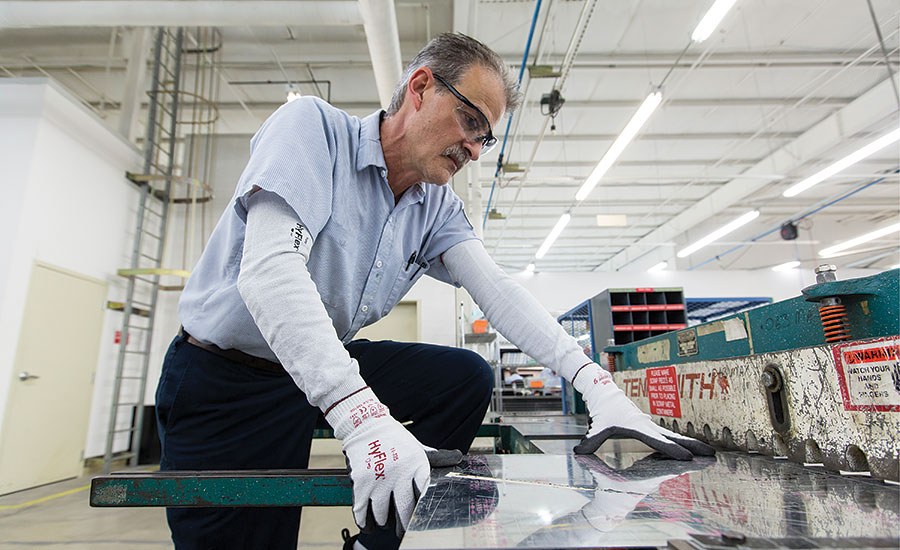A lot can change in five years. Consider this: in 2011, NASA’s Juno Spacecraft was just starting its trip to Jupiter, only six U.S. states allowed same-sex marriage and LeBron James was storming the playoff court in a Miami Heat jersey.
Time marches on, and with it progress. That’s why ANSI has decided to update its national hand protection standards. ANSI/ISEA 105-2016 is the latest revision of a voluntary industry consensus standard first published in 1999, then revised in 2005 and 2011. Such standards and classifications are critical for the industry, as they help safety managers, employers and product users appropriately select gloves for whatever workplace exposures exist in their specific line of work.
Why update the standards?
As industries and workplaces change and evolve, so does personal protective equipment. From new yarns to thinner materials to moisture management technologies, safety managers have more product selection now than ever before. While product evolution is necessary and beneficial for workers, it makes the job of the safety manager exponentially more difficult, as managers today are faced with an array of quality gloves to potentially select.
That’s where standards help. The 105 standard addresses the classification and testing of hand protection for specific performance properties related to chemical and industrial applications. In layman’s terms, the standards provide manufacturers with a mechanism to classify their products for specified areas of performance – and safety managers with clear guidelines on how to choose products that will best protect workers.
So how can safety managers easily decipher the new standards? Let’s look at the classification changes individually and examine what’s changing, what’s not and what that means for glove manufacturers and their customers.
Cut perfromance
The most significant change in the ANSI/ISEA 105-2016 update centers on the cut performance portion of the standard. The 2011 version allowed the choice of two different test methods with two different test machines. To reduce the variation in glove classification caused by multiple testing methods, the revised standard establishes a single test method (ASTM F2992-15 for TDM) to provide consistent ratings from the end-user perspective.
Additionally, while the old standards had five cut performance ratings, the new standards have nearly doubled the rating levels, with a new scale of A1-A9. The biggest effect of the new rating system will be more segmentation in the old ANSI cut 4 range. Gloves rated 4 in the old range can be rated A4, A5 or A6 in the new range. The new high-end levels – A7, A8 and A9 – were created to differentiate high-end cut-resistant gloves (as the availability and styles of these gloves continues to increase).
Impact resistance
Another significant change to the standards includes introducing an impact resistance test method. While no standard in North America currently exists to address glove impact, a new regulation is under development to implement a back of the hand impact standard for gloves. The new system will allow different levels to differentiate impact protection – critical for industries such as oil and gas, mining, automotive and construction.
Vibration reduction
Currently, when tested in accordance with ANSI S2.73-2002 (R2007), a glove’s vibration reduction is classified as pass/fail. A new ISEA working group is continuing to re-evaluate and refine this standard for more precise measurement.
Puncture protection
Standard changes to the puncture test are most applicable for those in the sanitation, recycling or medical industries. While the standard puncture test remains the same, the revised standard adds a needlestick puncture test.
What about chemical and heat protection?
A few performance properties weren’t impacted by the standard changes – most notably chemical protection. Permeation testing will still be done in accordance with ASTM Method F739 standards. However, that doesn’t mean safety managers can’t be more proactive in analyzing more data for glove selections – in fact we encourage it to ensure you’re selecting the best gloves possible. We recommend going beyond ASTM Method F739 chemical permeation testing by also looking to glove manufacturers to rate glove's chemical degradation.
So now what?
One of the most important things to be aware of in regard to the ANSI/ISEA 105 standard updates is the lack of mandatory implementation. While most safety managers use the standard as a guide to select the right protection equipment for their employees, the use of the selection standards is not mandatory in the U.S. Similarly, glove manufacturers are not required to update products to the new standards within a certain timeframe – meaning that until a timeline is enforced, we can anticipate variance in PPE identification to continue. It’s up to responsible manufacturers to adhere to the standards – and for safety managers to demand the best from their suppliers.






